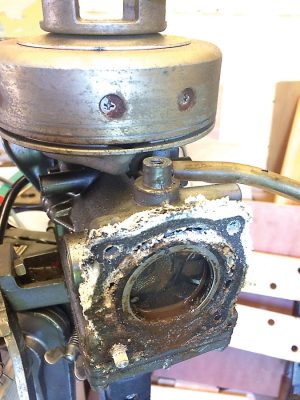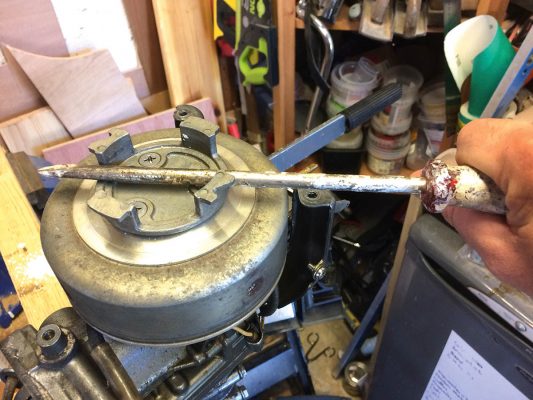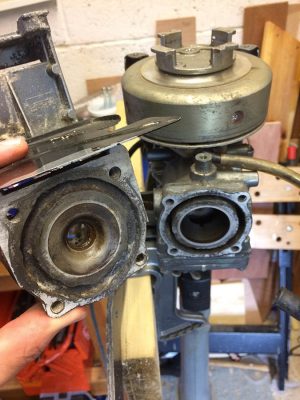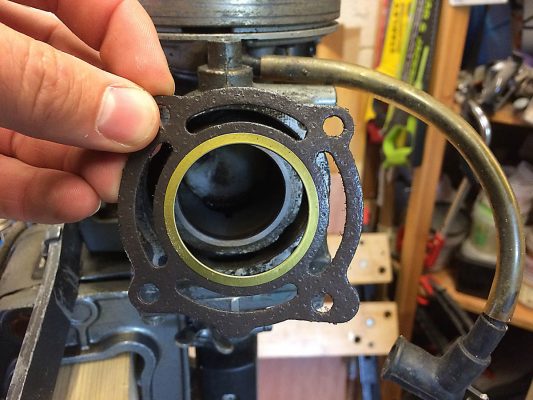Ben Meakins revives a seized outboard engine – a trusty 2hp Mariner motor that can benefit from spare parts badged as a Yamaha 2hp
The trouble began when I bought a rowing dinghy to use as a tender instead of a borrowed sailing club dinghy. Our trusty 1980s vintage Mariner 2hp outboard engine hadn’t missed a beat in the nine years we’d owned it – but after a season sitting, unused in my garage, I went to pull the starting cord and nothing would move – it had seized solid.
These engines are simple beasts, and with nothing to lose (a 1980s engine doesn’t really owe us anything) I started to take it apart.
First step was to remove the cowling and faceplate. This exposed the powerhead of the engine. There wasn’t much to see here, no visible rust – except for some salty deposits around the cylinder head. The cylinder and piston was the most likely cause of seizure, so it was time to look here.
I removed the recoil starter and the fuel tank and set it aside, to gain access to the cylinder head. Four bolts later (one sheared off, but the stud later came out with the help of a large pair of mole grips) and the head came off, showing the piston, stuck fast at the top of its travel, with rusty, oily liquid as the red-handed culprit.
I sprayed in some penetrating oil and left it to do its job, returning every evening for a week to add more.
A sharp tap with a softwood punch and a hammer moved the piston a few millimetres. Not wanting to force things, I added more penetrating oil and left it to do its work for another 24 hours, before returning. A few more days in this vein and, eventually, with the encouragement of a large screwdriver used as a lever on the flywheel, the piston moved its full travel from top to bottom and back again. The engine was unseized!

Having cleaned the area completely, the piston head was soaked in penetrating oil for a week. A few taps with a softwood punch then got things moving again.
On these engines the cylinder is cooled with salt water pumped around the outside – simple, but it does risk some corrosion – and the large quantity of white salt deposits and corrosion paid testament to the fact that maybe I hadn’t been as fastidious as I should have been about flushing through with fresh water after each use.
Nonetheless, the metal looked in a reasonable state, so I poured in some white vinegar. Next morning, the deposits had all but vanished – dissolved by the vinegar acid. A scrape with a softwood lolly stick and a quick go with a vacuum cleaner left things looking much improved – the waterway was clear for the first time in a while!
I poured in some more vinegar for the sake of clearing out any remaining deposits.
Before reassembly I ordered a new cylinder head gasket from ebay for the princely sum of £8. A useful tip is that these engines were also badged as a Yamaha 2hp, so spares are interchangeable.
Before refitting the cylinder head, I ensured both mating surfaces were scrupulously clean by using fine sandpaper on a flat surface and flatting back both engine block and cylinder head. This done, it was a quick job to reassemble. With a slug of fresh fuel in the tank, it roared (well, maybe groaned is more appropriate for such an old engine) into life.
Originally published in PBO Jun19









